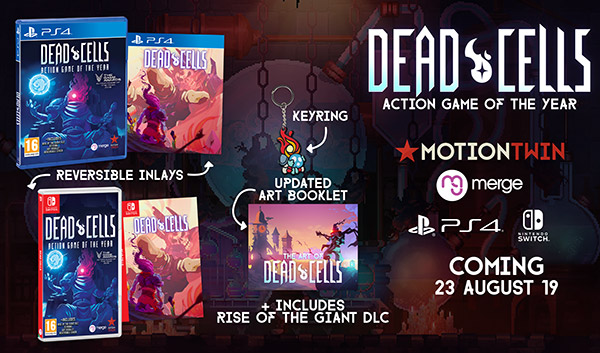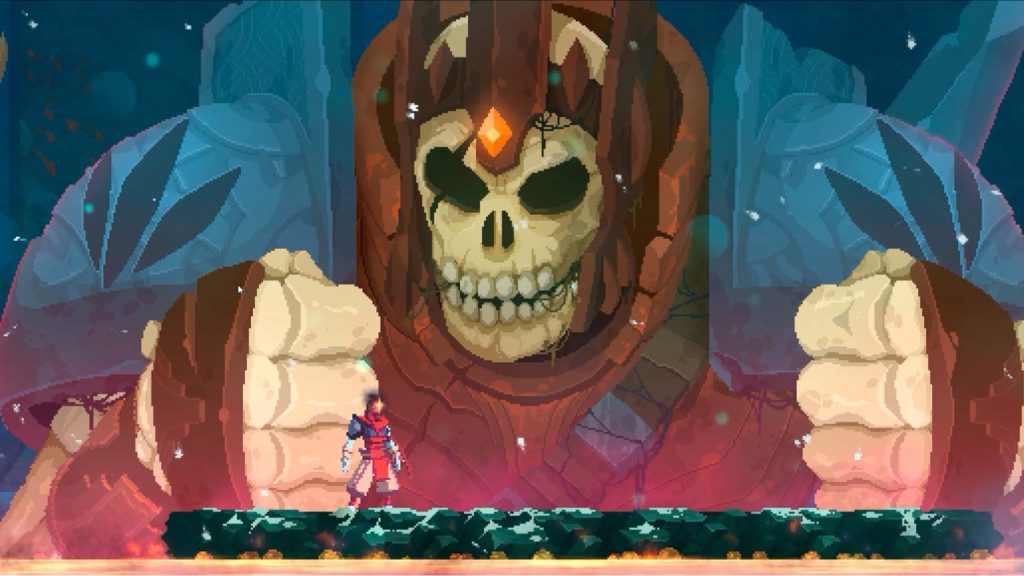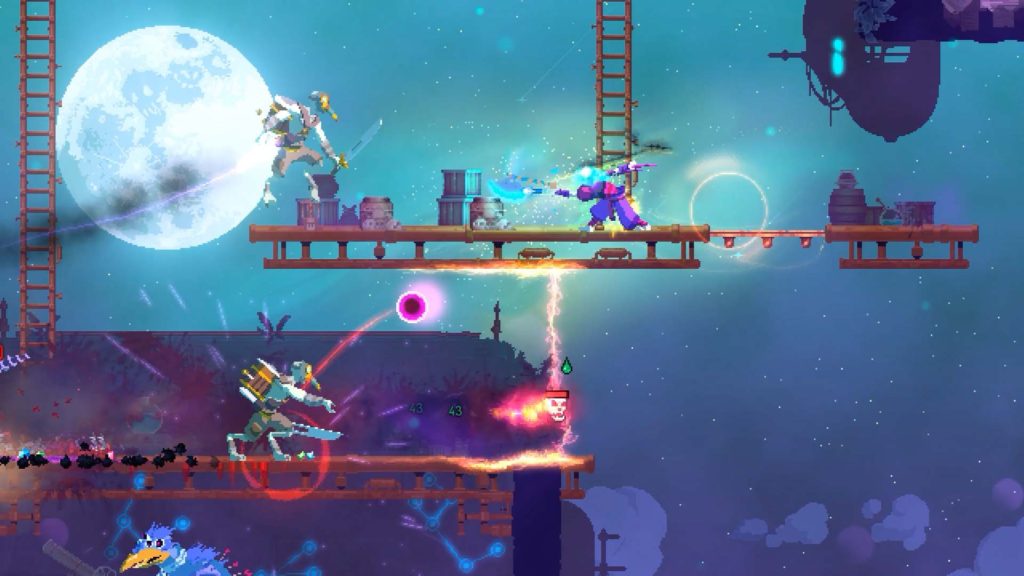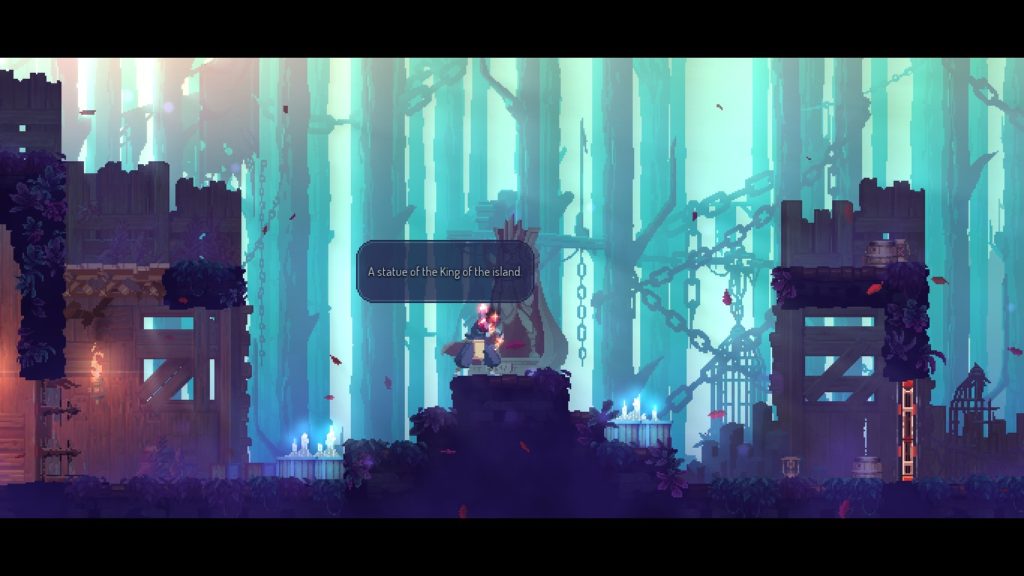Dead Cells Action Game of the Year Review
“Hi, I’m Kingsley. I’ve been at The Chelsea Gamer for a couple of months and this is my first game review. I’m reading Computer Science at Loughborough University. Reviews can be very personal and I thought I should let you know a little bit about me. I’m a huge fan of RPGs like Skyrim and Mass Effect but I also love strategy games like Total War or Cities Skylines. I’m predominantly a PC gamer. My favourite game to-date is Medieval 2 Total War, which I’ve been playing for more than 450 hours of my short time on this earth.“
Motion Twin’s 2018 hit “Dead Cells” is being re-released for the Nintendo Switch and PlayStation 4 in an edition which bundles the game’s “Rise of the Giant” DLC along with a key ring, an art book, and a reversible cover. Therefore, it seemed like the perfect time for me to jump in and see why this game has received such sustained success.

“Dead Cells” has me playing as the slime-possessed corpse of a prisoner who has to fight his way out of procedurally generated dungeons. The game combines the rigid fairness of Dark Souls with the charmingly terrifying rogue-like elements of “The Binding of Isaac” rendered in a beautifully brutal world that has me, along with millions of other players, completely hooked.
CAUTION: CONTAINS SPOILERS

Sound – Crispy Detail
The soundtrack here is a feast for the ears. Each new location has its own set of songs that add flavour to the landscapes. The mundane cruelty of the Prison area reflects its more conservative fantasy music, which juxtaposes itself against the steampunk industrial sounds of the following Toxic Sewers area. A lack of voice acting is not missed as interactions with friendly NPCs are quite limited and the game more than makes up for this in other areas.
Graphics – Seductive Chaos
The game comes with the charming 8-bit-like visuals that we’ve all become accustomed to from many indie games. From the sickly appearance of the Toxic Sewers to the cavernous depths of the Ossuary, each new area comes with its own unique visual character. Each new biome also features a new set of enemies specific to that area which adds further character to those levels. During my play-through, I encountered a variety of enemies which complemented their respective areas. The polluted environment of the Toxic Sewers harboured mutated rats and toxic slugs while sci-fi samurai roamed the forests above. The contrast between these various areas added to the chaotic pace set by the gameplay.

Dead Cells Action Game Of The Year Trailer
Game play: Painful fun
You play as the slime-possessed corpse of a prisoner who has to fight his way out of procedurally generated dungeons. Like Dark Souls, the game is both fair and brutal to the player in order to leave a great sense of accomplishment. Each time you die, you are placed back to the very first level of the game while losing all of the items and currency that you acquired. Despite seeming to lead you to play cautiously, the game gives you bonuses both for finishing the level within a certain amount of time and for killing enough enemies. Through killing enemies, or by gaining these bonuses, the player can gain “souls” which can be used to permanently upgrade your character to mitigate the negative effects of dying. This risk-and-reward gameplay created a huge sense of accomplishment within me as, with each death, I was able to make my way further and further into “Dead Cells” harsh world.

At the same time, the first levels appeared in a similar order, which could prove to be too repetitive for some. On the other hand, I didn’t find this to be an issue as the sense of slowly improving through trials and tribulations created a deep sense of satisfaction within me. This feeling is further enhanced by fantastic level design and a strategic use of procedural generation.
In addition, the level design complements the game’s “harsh but satisfying” nature thanks to the careful use of procedural generation. Rather than using it in place of content, the game uses this technique to build upon its already firm foundation. It features 17 different level types but, when a player dies, the structure of the level is randomized but the key features remain constant. Teleporters are placed in strategic areas around the level which makes backtracking less painful. Similar to “The Legend of Zelda,” the earlier levels feature areas that can only be accessed after getting bonuses and items found by killing bosses from later stages. As a result, an otherwise repetitive formula of having to start at the beginning turns into a thrilling search for new areas and passageways to explore.
Making it up as you go along
“Dead Cells’ ” level design further instills a sense of accomplishment within the player by the strategic placement of boss stages. After successfully completing a few levels, I was met with the games first boss, the Concierge. Although it swiftly killed me, I was able to dodge some of its attacks and began to see its attack patterns. It killed me at least several more times, yet with each death, I began to see more and more patterns. Eventually, after several attempts, I was able to use a hammer, a shield and a minion-summoning grenade in order to kill it once and for all. Although the journey was immensely difficult, the game gave me the chance to figure something out for myself without having to hold my hand (a feat that many games struggle to achieve nowadays).
Similar to Dark Souls, the game’s story is initially quite vague and requires a large amount of searching and interpreting by the player in order to fully understand it. As mentioned before, NPCs are sprinkled around the various levels which give the player vague hints and possible foreshadowing about what is happening and what will happen. The traces of lore that the game sprinkles throughout its loading screens may not be enough for story enthusiasts. Yet the strong combat more than makes up for this weakness.

Finally, the game’s combat has a very low bar to entry but has a high skill ceiling. It controls like other 2D side-scrollers, but with the addition of a double jump and a roll. The player can equip up to 4 weapons and one healing item at a time, which forces you to constantly make choices about what items you discard and what items you keep. Things are further simplified as the player can only equip one primary weapon and one secondary weapon which forced me to make quick, but consequential decisions. The game has a huge variety of different weapon types sprinkled throughout its various levels which never ceased to amaze me. From electric whips to ice blasting shields the game allows for a surprising array of different styles of play.
Fun Factor: Never has masochism been so fun
To conclude, it’s clear that this game is not for the faint of heart, but, if you’re up for a challenge, you will be provided with up to 50 hours of satisfying and eye-catching hardship.
Initial Rating
NO THANKS/ MORE CONTENT REQUIRED/ GREAT FOR A WEEKEND OR TWO/ GOOD FOR A WHILE/ CAN’T STOP PLAYING
Pros:
- Charming Visuals
- Satisfying, tough but fair gameplay
- The Developer’s good attitude will ensure longevity
- Variety of different levels
- Branching Paths and Procedural Generation add to replay value
Cons:
- Story might seem a bit too vague for some
- Procedural Generation might not be enough to avoid a sense of repetition
























